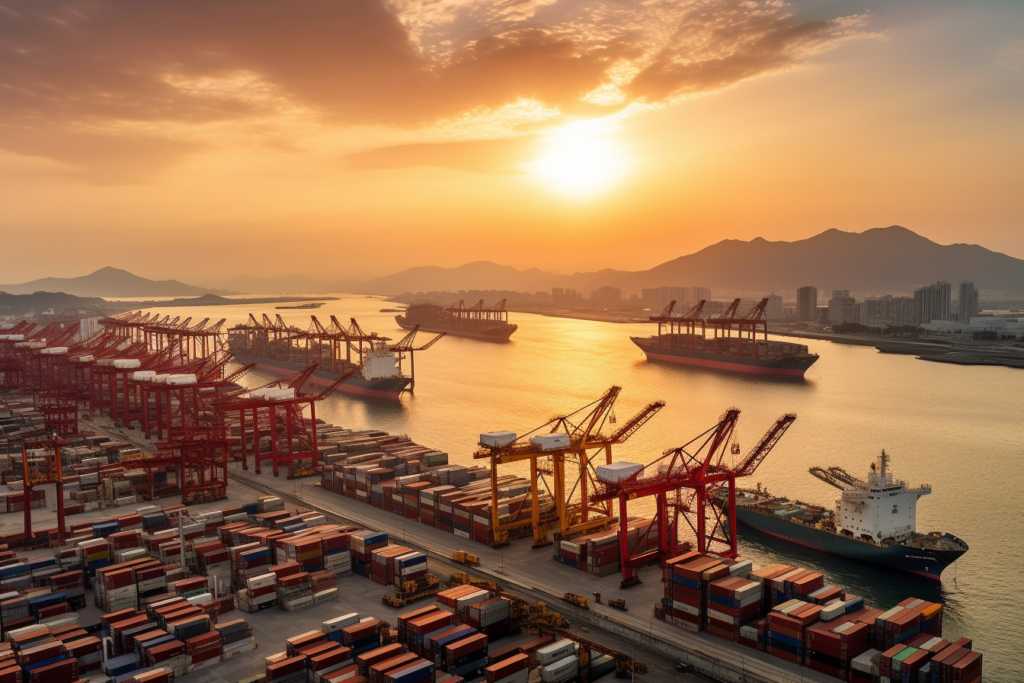
Remarkable growth has been evolving in the China-owned fleet of merchant ships. This fleet – comprised of bulk carriers, tankers, container ships, gas carriers and other vessel types – expanded rapidly in 2022, adding to enlargement in previous years. Further growth is foreseeable over the period ahead.
Within the entire world fleet, China is now the number two shipowning country, having overtaken Japan several years ago. Moreover, it has moved much closer to the number one owner, Greece. This achievement has reflected large volumes of newbuilding deliveries as well as second-hand purchases. The upwards trend accompanied continued growth in China’s seaborne trade, although last year saw a downturn in import volumes and only sluggish growth in exports.
Gauging the rise
Some fleet figures emphasise progress. During the past five years, the growth rate of the China-owned merchant ship fleet averaged 7.4% annually, based on calculations derived from Clarksons Research data. Faster expansion in the previous five years results in growth during the decade ending 2022 averaging 8.4% annually. From end-2012 to end-2022 fleet capacity more than doubled to reach 239.0 million gross tonnes (a common measurement of capacity).
There were variations among the fleets of different ship types. In the biggest segment, bulk carriers, capacity grew by 85% during the past decade, reaching 128.0m gt at end-2022, while in the tanker segment a 96% rise to 41.6m gt was recorded. Container ship capacity expanded much more quickly, by 260% to 41.1m gt. But these growth rates were exceeded by that seen in the relatively small gas carrier fleet, which saw a 471% enlargement to 4.8m gt.
A continuing trend
In 2023 and later years, overall capacity in the China-owned fleet seems likely to continue growing. A large newbuilding orderbook is one indication, although precise delivery volumes are less clear. Other influences – scrapping, and second hand purchases and sales – are difficult to predict and are likely to reflect at least partly the evolution of freight market trends, typically subject to great uncertainty.
At the beginning of this year the volume of newbuilding deliveries scheduled to be delivered to Chinese owners during 2023 was about 14m gt, or roughly 6% of the existing fleet, according to the Clarksons Research statistics. Deliveries of new container ships especially are set to boost the fleet, while newbuilding tankers, bulk carriers and liquefied natural gas carriers also will be prominent.
Another notable metric is the value of newbuilding orders placed by China-based investors. In the past three years these totalled just over $50 billion, about 17% of the world total and by far the highest figure for any owner nationality, almost a third higher than the next largest investor, Japan.
One pattern unfolding is the changing mix of newbuilding orders placed by Chinese investors. Tankers and bulk carriers previously dominated the mix. But it has diversified recently with, in 2022, increased LNG carrier and car carrier orders becoming features, accompanied by additional container ship orders. Alternative fuel capable vessels comprised a large proportion.
Please contact the author if you have any questions or comments, at: [email protected]
Any opinions expressed by contributors do not necessarily reflect the views of the Chinese Shipping Association of London. Content provided are for informational purposes only.

